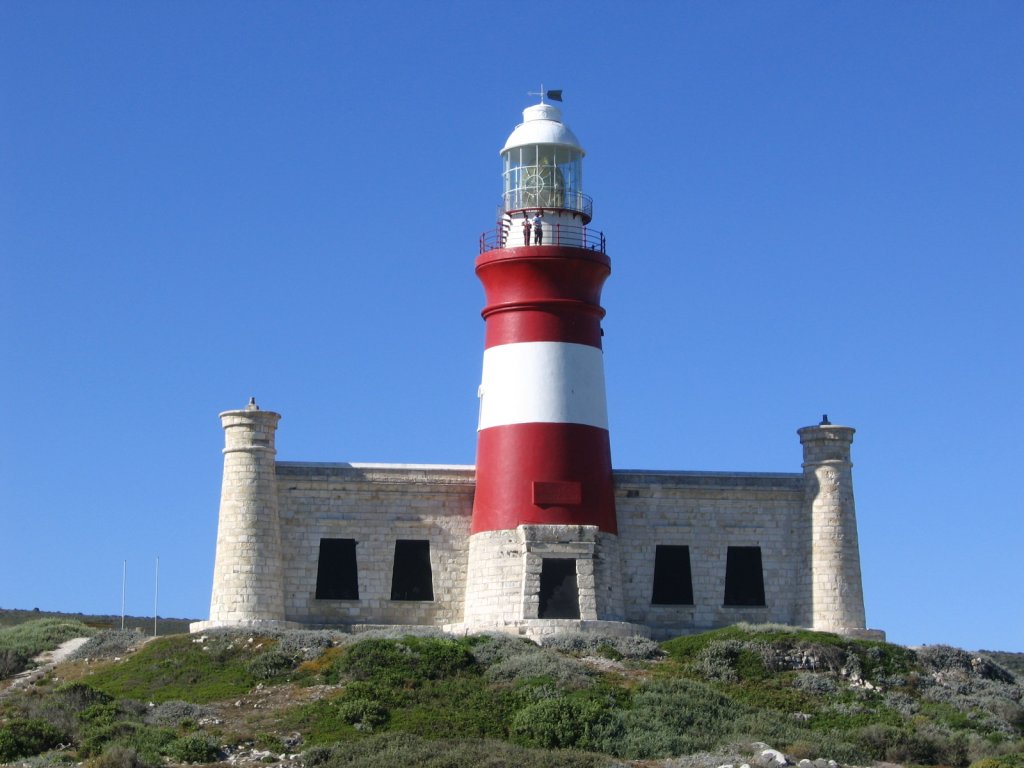Agulhas Lighthouse
34°49'45.7"S
20°00'32.4"E

Located near the southernmost point of Africa and the confluence of the Atlantic and Indian Oceans, Cape Agulhas has historically been a hazardous location for seafarers due to a combination of strong winds, conflicting currents and shallow waters with hidden reefs. Calls to construct a lighthouse at L’Agulhas began shortly after the British takeover of the Cape Colony—particularly after the shipwreck of the Arniston in 1815 with 372 fatalities—but at that time the British government had refused to finance the building of lighthouses and left the responsibility to local authorities. In 1847, the government finally acknowledged the benefit of safer shipping to the British Empire and agreed to fund half of the total cost of the project, which marked a significant change in governmental policy and led to the construction of over 30 more lighthouses on the southern coast of Africa, improving coastal trade and the passage of ships to India and the Far East. Construction of the Cape Agulhas Lighthouse began the following year and its lamp was first lit on March 1, 1849.
The main proponent of building and obtaining funding for lighthouses along the southern coast of Africa was Lt. Col. Charles Michell, Surveyor-General and Civil Engineer to the Cape Colony, who had studied lighthouse design and current technology in England and France. The Cape Agulhas Lighthouse was designed by Michell, regarded as the father of civil engineering in South Africa, and was his last major work. Modeled in the Egyptian Revival architecture style, the towers at each end of the building are believed to be patterned after the Pharos of Alexandria and originally served as chimneys to render the tail fat of local sheep to provide fuel for the light. Solid limestone blocks from a nearby quarry were used to construct the walls of the structure but since access to the site was difficult, other construction materials and workers had to be brought in by sea. The lighthouse’s original lantern incorporated a state-of-the art first order fixed dioptic lens and Argand burner manufactured by Henry-Lepaute in Paris providing a 4,500 candlepower light that was visible up to ten miles at sea. It was the first properly designed and equipped lighthouse in southern Africa.
In 1960, the lighthouse was condemned after severe deterioration was found in its limestone walls and the light was relocated to a new aluminum lattice tower behind the building. The original structure was spared from demolition through the efforts of local residents and the lighthouse was recommissioned in 1988 following its restoration. Cape Agulhas Lighthouse was designated as an International Historic Civil Engineering Landmark by ASCE and the South African Institution of Civil Engineering in 2016.


